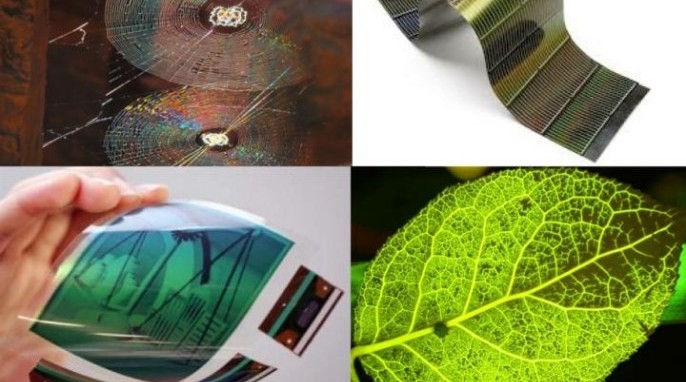Electronics Inspired by Spider Webs and Leaves
Have you ever wished your smartphone was shatter-proof, bendable, or even stretchy? If so, you might not have to wait too long for the phone of your dreams because two physicists at Boston College are working on building the next generation of flexible, durable electronics.
They have modeled the next generation of electronics on strong, pliable structures found in nature. In particular, spider webs and leaves. Researchers believe this approach promises portable electronics that are not only hardier, but also low-cost and simple to manufacture.
The researchers say that their new electronic networks could improve the efficiency of solar cells and give rise to a new generation of flexible, durable touch screens and displays. “Increasing efficiency of solar cells, in particular, is a critical component in the quest for renewable energy sources, a major sustainability and ecological challenge,” says Andrzej Herczynski, research associate and physics professor. “Flexible monitors and displays will likely become increasingly important for such possible uses as wearable screens and elastic smart phones.”
The vein-laced structure of a leaf can serve as a model for highly effective solar cells, light sources, heaters, and other applications. “It starts with the premise that natural forms offer ready-made solutions for efficient designs, tested over millions of years through natural selection,” Herczynski says.
“This natural structure has been optimized through the evolutionary process for efficient nutrient delivery with maximal strength and light harvesting,” adds Boston College Professor of Physics, Krzysztof Kempa.
A cracked smartphone screen may look like a spider’s web, but now researchers are looking at how the structure might be built into the screen’s design. The next generation of touch screens and display panels might be modeled after spider webs, making electronic displays much more efficient, more flexible, and stronger than any design in use today.
The team has been testing their new models, and have been surprised by how fast and stretchy they are. The spider web design, in particular, can be stretched by up to 25 percent without any loss of performance and sees only a minimal decline when stretched up to 100 percent of its original size, the team reports.
These findings are published in the journal Nature Communications.
Image courtesy of Boston College




